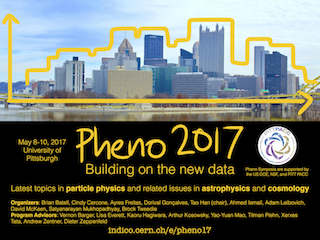Speaker
Description
The radiative decays of the Higgs boson to a fermion pair $h\rightarrow f\bar{f}\gamma$ is revisited, where $f$ denotes a fermion in the Standard Model (SM). Both the chirality-flipping diagrams via the Yukawa couplings at the order $\mathcal{O}(y_f^2 \alpha)$, and the chirality-conserving contributions via the top-quark loops of the order $\mathcal{O}(y_t^2 \alpha^3)$ and the electroweak loops at the order $\mathcal{O}(\alpha^4)$, are included. The QED correction is about $Q_f^2\times {\cal O}(1\%)$ and contributes to the running of fermion masses at a similar level, which should be taken into account for future precision Higgs physics.
The chirality-conserving electroweak-loop processes are interesting from the observational point of view. First, the branching fraction of the radiative decay $h \to \mu^+\mu^- \gamma$ is about a half of that of $h \to \mu^+\mu^-$, and that of $h \to e^+ e^- \gamma$ is more than four orders of magnitude larger than that of $h \to e^+ e^-$, both of which reach about $10^{-4}$. The branching fraction of $h \to \tau^+\tau^- \gamma$ is of the order $10^{-3}$.
All the leptonic radiative decays are potentially observable at the LHC Run 2 or the HL-LHC.
%
The kinematic distributions for the photon energy or the fermion pair invariant mass provide non-ambiguous discrimination for the underlying mechanisms of the Higgs radiative decay. The process $h \to c\bar c \gamma$ and evaluate the observability at the LHC will be discussed. It turns out to be comparable to the other related studies and better than the $h \to J/\psi\ \gamma$ channel in constraining the charm-Yukawa coupling.




